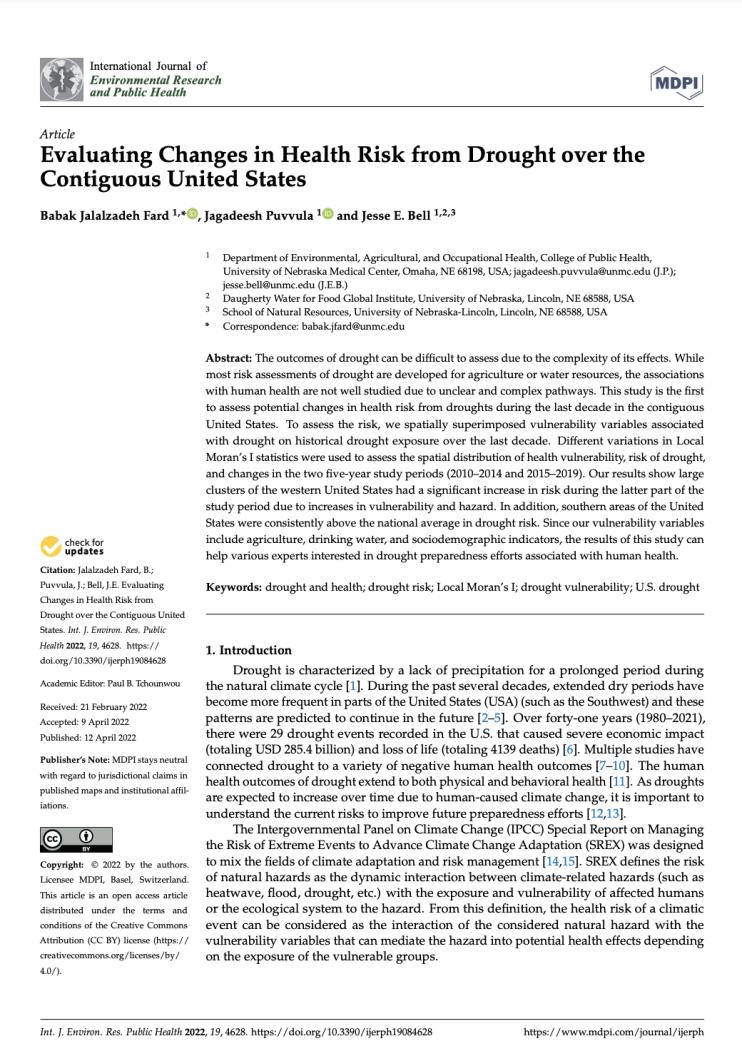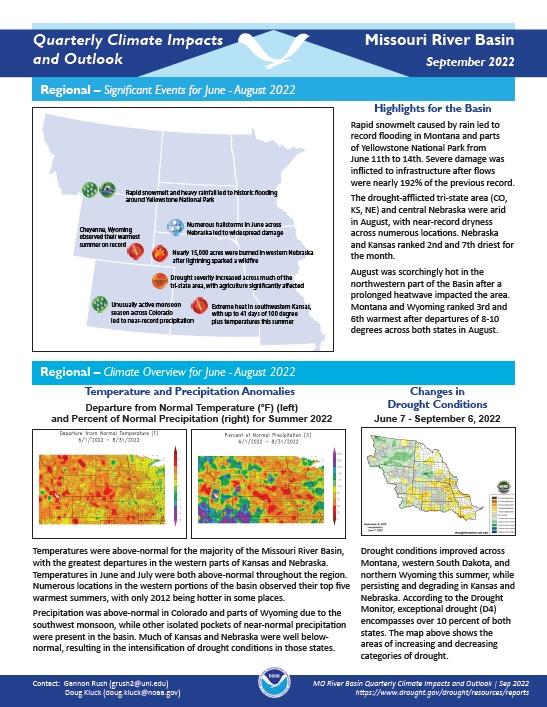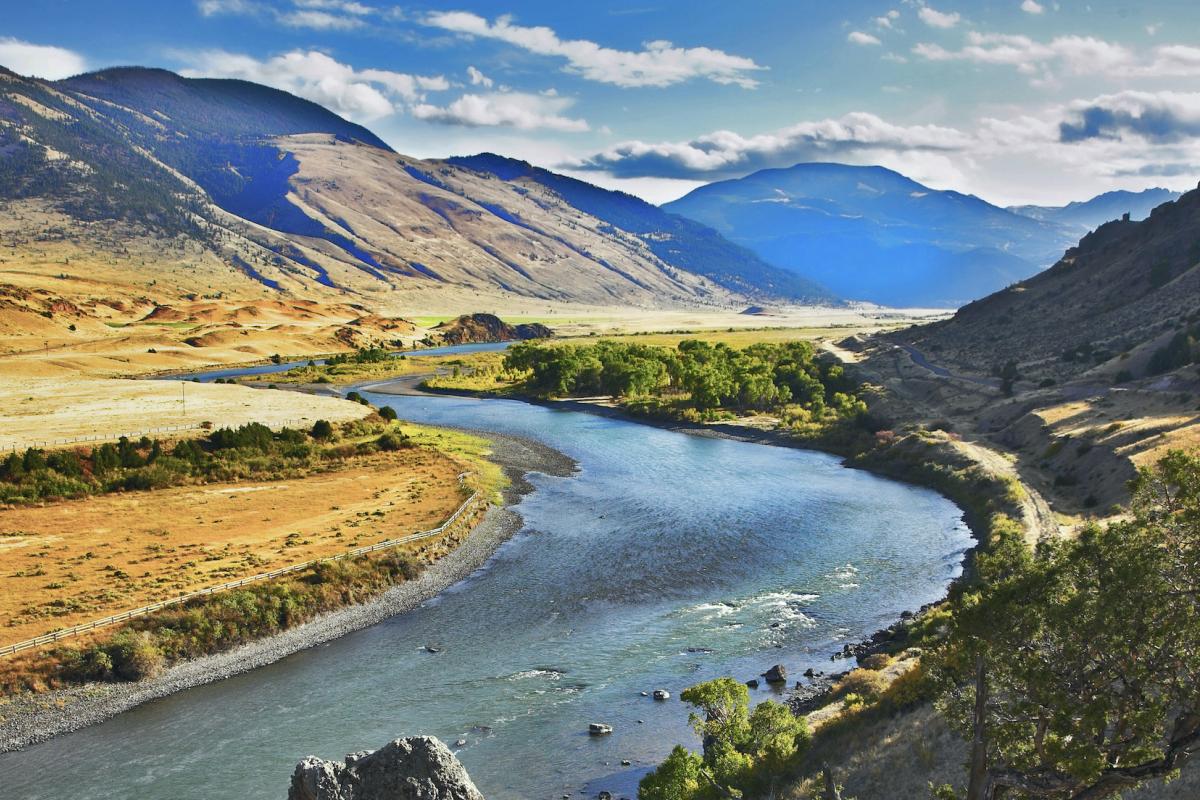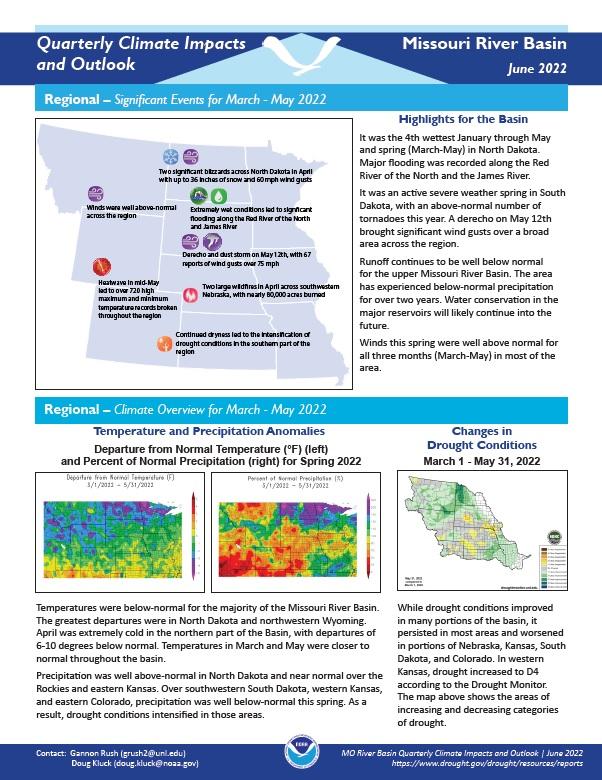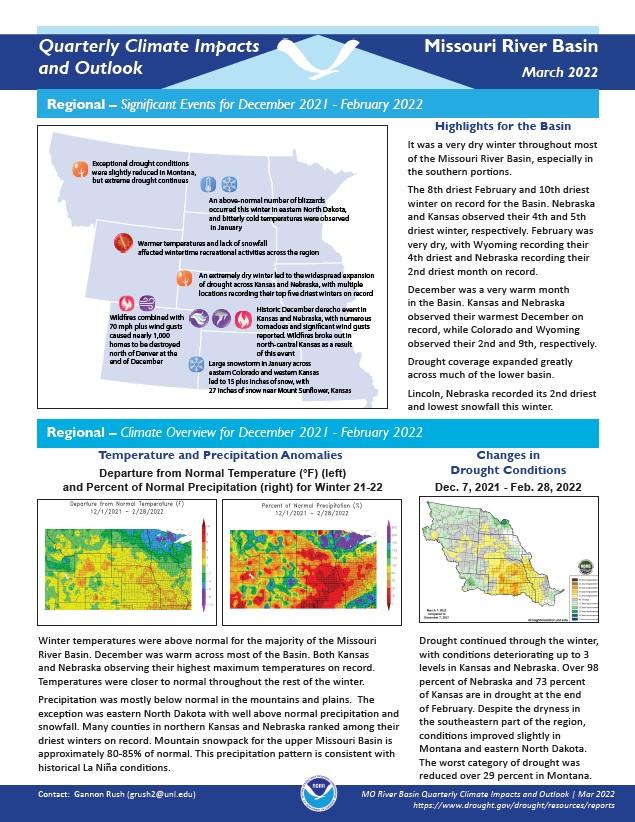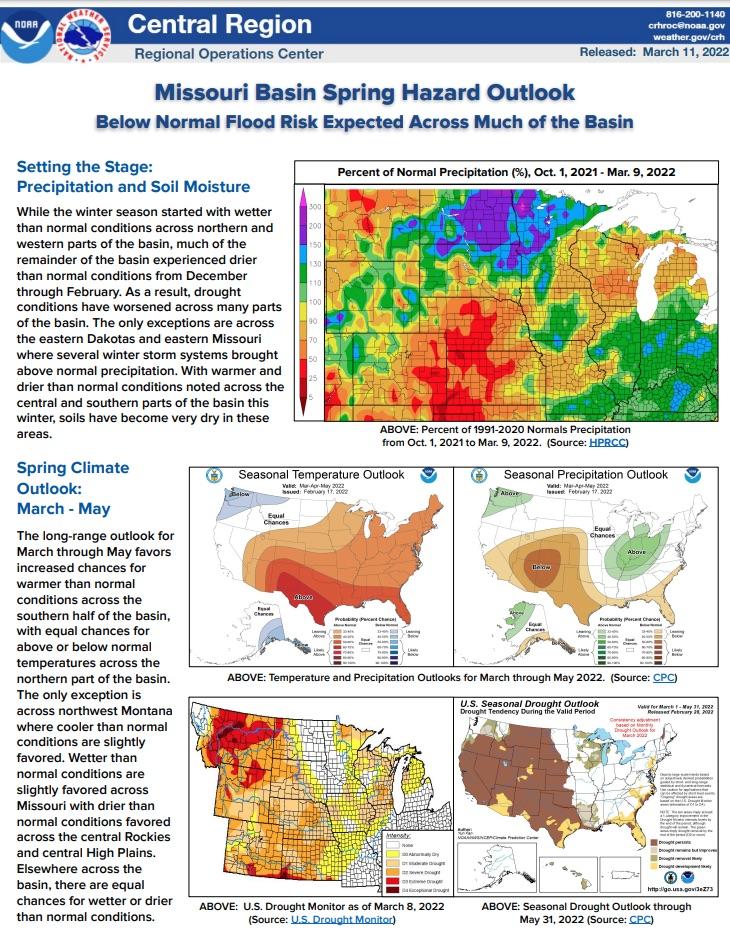This study, led by researchers from the University of Nebraska Medical Center and published in the International Journal of Environmental Research and Public Health, assessed "potential changes in health risk from droughts during the last decade in the contiguous United States."
Quarterly Climate Impacts and Outlook for the Missouri River Basin for June–August 2022. Dated September 2022.
Temperatures were above normal for the majority of the Missouri River Basin, with the greatest departures in the western parts of Kansas and Nebraska. Precipitation was above normal in Colorado and parts of Wyoming due to the Southwest Monsoon, while other isolated pockets of near-normal precipitation were present in the basin. Much of Kansas and Nebraska were well below normal, resulting in the intensification of drought conditions in those states.
Quarterly Climate Impacts and Outlook for the Missouri River Basin for March–May 2022. Dated June 2022.
Temperatures were below normal for the majority of the Missouri River Basin. The greatest departures were in North Dakota and northwestern Wyoming. Precipitation was well above normal in North Dakota and near normal over the Rockies and eastern Kansas. Over southwestern South Dakota, western Kansas, and eastern Colorado, precipitation was well below normal this spring.
Quarterly Climate Impacts and Outlook for the Missouri River Basin for December 2021–February 2022. Dated March 2022.
Winter temperatures were above normal for the majority of the Missouri River Basin. Precipitation was mostly below normal in the mountains and plains. The exception was eastern North Dakota with well-above-normal precipitation and snowfall. Many counties in northern Kansas and Nebraska ranked among their driest winters on record.
The National Weather Service developed 2022 Spring Hazard Outlooks in coordination with NOAA's National Centers for Environmental Information (NCEI) and National Integrated Drought Information System (NIDIS); High Plains Regional Climate Center; Midwestern Regional Climate Center; U.S. Department of Agriculture; and National Interagency Fire Centers' Geographic Area Coordination Centers. This outlook highlights the various spring hazards that could occur and potential impacts across the Missouri River Basin.


